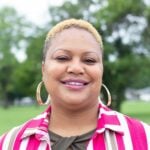Housing isn’t a luxury. Having shelter to protect you from the elements is essential. Most living creatures have some form of habitat in which they live. Humans, being the fancy creatures we are, took this simple and basic concept of shelter and elevated it into luxury high-rise apartments and mansions with indoor and outdoor pools, tennis courts and six-car garages.
While I don’t begrudge anyone who can afford such luxury, at the end of the day, it all comes down to having a place to lay your head, a place where you feel comfortable and safe and a place where you belong.
For many of us, however, decent and affordable housing is a luxury, and owning your home is a fantasy.
In October, the Recorder interviewed a man in his 60s who paid $600 in rent from his $700 disability check for a two-bedroom house in the 46218 zip code. With only $100 left, the man couldn’t afford to pay other bills and eventually his gas and water were shut off. Faced with fees and past due balances, this becomes an insurmountable situation and an unfortunate cycle that far too many face.
This is but one example of Black residents in Marion County who are rent burdened. According to the U.S. Department of Housing and Urban Development, spending 30% of gross household income on housing costs is considered rent burdened. The man in the example is considered to be severely rent burdened, meaning he spends more than 50% of income on housing costs. In Marion County 46% of households are renter occupied and Black residents make up the majority of those considered rent burdened.
And it’s not just renters whose living situation is precarious. Those who do find themselves in the homeownership category often worry about foreclosure — especially after the emergence of COVID-19, which left many with reduced hours or without a job. Only about 34% of African Americans in Indianapolis own homes. Many of the majority-Black neighborhoods are a result of redlining in the 1930s.
Redlining was a color-coding process whereby government surveyors would classify neighborhoods as best (green), still desirable (blue), definitely declining (yellow) and hazardous (red). Redlined areas were near pollutants or other environmental contaminants such as sewer overflow. Redlined areas were a credit risk, so local lenders didn’t provide loans to potential homeowners. The practice ended in 1968, but not before creating neighborhoods with health hazards, lower property values and lower life expectancy for Black residents.
Now, some of these neighborhoods have been or are being redeveloped. The word redeveloped or the phrase “up and coming” are often harbingers of gentrification to come. They’re loaded words often signifying to longtime residents they will be pushed out for a bigger, better and whiter community.
Because housing is so essential to quality of life, the Recorder dedicated a series of stories on various aspects of housing, as well as a virtual town hall. We planned for the package of stories to run before the COVD-19 pandemic began, but soon realized the already dire housing situation for many became even more so once the public health crisis began.
In this edition, we delve into issues such as gentrification, evictions, renter’s rights and assistance. The virtual town hall will be 11 a.m. July 25 on our Facebook page. We will speak with experts who can address housing issues in our city as well as provide resources for those needing assistance. We hope to find some solutions as well, but we know these issues will take time and a concerted effort by many to fix. Whether renting or buying, everyone deserves to live in affordable, decent and safe housing.







